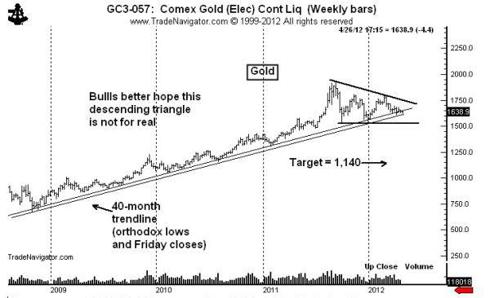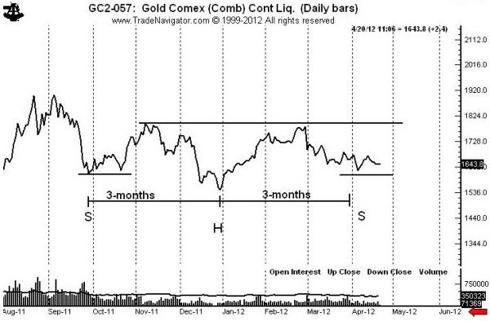skip to main |
skip to sidebar
Connect with Us
Popular Posts
-
US Dollar Breakout Feels Imminent – but When? Euro Struggle to Rise with Risk a Concern for GDP Data, Crisis Return Stro...
-
A batch of positive international news releases yesterday led to US dollar losses as investors shifted their funds to riskier assets. A bet...
-
RSIOMA is advanced version of RSI. The best pairs to trade using this scalping strategy : EUR/USD, Aud/USD, GBP/USD. Time frame:1M and 5M....
-
The US Dollar (ticker: USDOLLAR ) refused to break above key resistance or below significant support for yet another trading week as...
-
By William L. Watts and Carla Mozee , MarketWatch LOS ANGELES (MarketWatch) — The dollar sl...
-
Wed Apr 18, 2012 11:26pm EDT * MSCI Asia ex- Japan in ranges, Nikkei falls 0.6 pct * Euro steadies vs dollar * Firmer dollar wei...
-
(Reuters) - The euro retreated from a session high against the dollar on Thursday after Spain auctioned two- and 10-year bonds with good ...
-
April 17 | Tue Apr 17, 2012 2:17am EDT (Reuters) - The following were the top stories on the New York Times business pages on Tuesd...
-
GBP/USD: The recent break back above 1.6000 now opens the door for fresh upside towards the October 2011 peak at 1.6165. However, any...
-
The yen weakened against the U.S. dollar Thursday after Japan swung back to a trade deficit in March, with the greenback little-changed a...
Blog Archive
-
▼
2012
(2127)
-
▼
April
(1116)
- U.S. dollar jumps on Aussie after RBA rate cut
- EUR/JPY - Elliot Wave Count Suggests It May Be Tim...
- Nikkei drops 1.8 percent
- Natural Gas: Beaten Down, but Looking Up
- METALS-Copper hovers near $8,400, China data supports
- UPDATE 1-Brent-WTI crude spread may widen sharply ...
- Australian Dollar Drops on Unexpectedly Large RBA ...
- Gold Short Term Bullish Base?
- EURUSD Inches Towards Trendline
- FOREX-Yen keeps climbing as data saps risk appetite
- Nikkei opens down as yen pressures exporters
- Australian Dollar Sold as Chinese PMI Data Disappo...
- US Dollar Holds Key Trend Line Support as S&P 500 ...
- May Day- A Day Dedicated To Workers
- GLOBAL MARKETS-China PMI helps Aussie shares amid ...
- Japan MOF's Nakao: ready to act on yen if needed
- 5 min Forex Trade Trading System
- Forex: EUR/JPY drop tests 106.00 ground
- EUR/USD is holding near Friday's closing levels in...
- Early Glance: Silver companies
- Guest Commentary: Gold & Silver Weekly Outlook for...
- Shares, euro slip as Spain slides into recession
- What Evil Lurks in the Hearts of Hactivists?
- OPEC output hits highest since 2008: Reuters survey
- How Nvidia can accelerate the graphics in your apps
- HPTI Forex Strategy
- Australian mining magnate to run for Parliament
- Price Action Fractal Scalping - Forex Scalping Str...
- Oil slips, holds above $119 on stimulus prospects
- Barnes & Noble, Microsoft ink $300M deal on e-reading
- Japanese Yen Continues Post-US GDP Climb Against U...
- Pocket Will Have You Grabbing Content by the Handful
- MONEY MARKETS-Spain banks buy govt bonds while che...
- Stubborn inflation, weak lending weigh on eurozone
- Linux and Gaming: Full Steam Ahead
- CANADA FX DEBT-C$ slides after weaker-than-expecte...
- A New Day Is Dawning for the Technology Market
- Asus bets on 'Happiness 2.0' to drive growth
- US Dollar Steady as Personal Income Grows, Prices ...
- Dollar softer, but euro fails get a boost
- LG to open up multi-screen cloud streaming service
- Haven status lifts pound to annual high
- FOREX-Euro weakens on wariness before elections, ECB
- Eurozone inflation falls to 2.6% in April
- B&N, Microsoft team up on Nook, college businesses
- Dollar softer, but euro fails get a boost
- Pinterest sees user base double in three months
- Euro zone price pressures persist, constrain ECB a...
- Europe's economic gloom hurts shares, euro
- Apple responds to tax criticism by highlighting jo...
- Eurozone inflation eases to 2.6 percent
- Dell says XPS 13 ultrabook exceeds sales expectations
- Australian Dollar Drops Versus Peers on RBA Easing...
- Apple considered iPhone with physical keyboard? Wa...
- Oil steady above $119 on stimulus hopes
- Instant View: Euro zone inflation cools but ECB se...
- Natural Gas Drillers Did A Fabulous Job... Of Crea...
- Australia billionaire to launch "unsinkable" Titanic
- TEXT-S&P affirms Alumina Ltd. rtgs; off watch; out...
- Economy, Central Banks, And Technical Factors To D...
- Economy, Central Banks, And Technical Factors To D...
- Continuing The Debate On The EIA Natural Gas Weekl...
- Weekly Performance Update On 6 Large Foreign Integ...
- Dollar hits 2-mth low as U.S. economic momentum slows
- Euro-zone M3 up, private loan growth slows in March
- Dollar Falls, Risk Assets Rallying
- Dollar softens on Fed easing hopes, shares gain
- Euro Stays Stable as Spanish Economy Shrinks Less ...
- Dollar index falls to 2-month low
- UPDATE 1-SNB posts Q1 loss as strong franc weighs
- NZD/USD Classical Technical Report 04.30
- Samsung is now the world's largest manufacturer of...
- AUD/USD Classical Technical Report 04.30.2012
- Final 2 bodies from Costa Concordia may soon be re...
- USD/CHF Classical Technical Report 04.30
- GBP/USD Classical Technical Report 04.30.2012
- USD/JPY Classical Technical Report 04.30.2012
- EUR/USD Classical Technical Report 04.30.2012
- Woman with two vaginas: 'I lost my virginity twice'
- PPI falls for fifth month in a row, surprises experts
- FOREX-Dollar hits fresh 2-month low vs yen, U.S. G...
- Currency Trading Strategies
- GBP/JPY Classical Technical Report 04.30.2012
- US Dollar Index Classical Technical Report 04.30.2012
- More Consolidation Seen Ahead Before Fresh Round o...
- Australian Dollar Holds Firm Ahead Of A Likely Rat...
- Crude oil to go eastbound? TransCanada mulls over ...
- USD/JPY Edging Lower; Stop-Loss Orders Beckon
- US dollar index edges higher versus major rivals
- Forex - USD/JPY up in Asian trade
- Gold prices for Monday
- FOREX-Dollar hits fresh 2-month low vs yen after U...
- Deadline looms for Falcone on LightSquared control
- Asian shares gain on hopes U.S. data leaves scope ...
- Looking to Sell EUR/USD
- Natural Gas: Timing Is Everything
- This Cash Rich $10 Mining Stock Worth A Serious Look
- REFILE-METALS-Copper climbs to near 1-month top as...
- NYMEX-Crude slips in thin trade after weak US data
- REFILE-Brent crude edges down towards $119 on slow...
-
▼
April
(1116)
Categories
- CAD dollar (1)
- commodities (12)
- currencies (23)
- EURO (3)
- EURO FALLS. (2)
- forex (1)
- Gold (1)
- Netgas loses (1)
- Silver (1)
- us dollar climbed with dollar. (1)
Recent Posts
Followers
Recent Comments
Copyright 2012 A new solution for FOREX loser,Make Your TRADE Easy.. Design By Blogger Tips
| Sponsored by Forexsimple.blogspot.co.in - -


0 comments:
Post a Comment